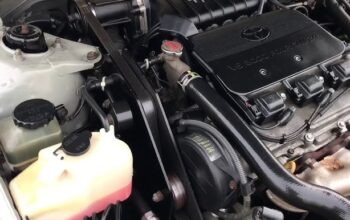Working as a self-employed HGV driver puts a lot of responsibility on your shoulders. You don’t just move goods, you manage your time, your routes, your truck, and the risks that come with every mile. One wrong move on the motorway, one delayed stop in bad weather, and suddenly, you’re looking at downtime, damage, or worse. That’s why choosing the right HGV insurance isn’t something to leave to chance.
For drivers running their own vehicle, the legal minimum is Third-Party Only cover. It protects others in the event of an accident where you’re at fault. But this type leaves your own vehicle unprotected. That might work for some, though many independent drivers find the risk too high. A stolen truck or serious damage could wipe out weeks of income. When you’re your own boss, those delays don’t come with sick pay or backup fleets.
Instead, many opt for broader protection. Comprehensive policies include cover for damage to your own HGV, regardless of fault. This often proves useful in tight yards, during solo night runs, or when dealing with unfamiliar routes. Some policies even allow you to add optional cover for the cargo itself. That’s important because most HGV insurance plans don’t include Goods in Transit protection by default. You’ll usually need to add that separately if you want to protect the value of the load you’re carrying.
HGV insurance is different from courier insurance. Where couriers handle multi-drop jobs in towns or cities, HGV drivers often haul one large load to a single destination. That changes the risk profile. These vehicles, often weighing over 3.5 tonnes and up to 44 tonnes, operate on motorways and A-roads, with unique challenges, including long braking distances, higher repair costs, and more potential damage if a crash happens. Because of this, insurers price HGV cover differently and look more closely at driving history, age, and cargo type.
Hazardous materials present another grey area. Some policies may not include transport of fuel, chemicals, or industrial items unless you declare them in advance. It’s possible to arrange proper cover for those jobs, but assuming it’s included could lead to problems. If you often haul those kinds of goods, make sure to ask directly what your policy does and does not allow. It may not be automatic, even under a more expensive plan.
One part that often gets overlooked is whether the policy fits your working style. For example, some drivers lease their cab but own their trailer. Others operate under subcontracted work and change jobs weekly. If the vehicle switches hands or gets used for more than one kind of task, your insurer needs to know. Getting caught with the wrong usage type listed could void the policy. A well-matched HGV insurance plan will reflect how you actually work, not how you think the form should be filled out.
Multi-vehicle ownership can also affect things. If your operation grows and you run two or more trucks, moving to a fleet policy might make more sense. Some insurers offer flexible plans that let you add or remove vehicles as work demands shift. But for self-employed drivers operating just one vehicle, it’s usually better to stick with single-truck cover that’s been tailored for haulage work rather than general business use.
Age restrictions apply, too. Most policies are designed for drivers over 25, and some may not offer competitive rates unless you’ve built up a clean driving record. If you’re just entering the field, the lack of experience could limit your options or increase costs. Still, some insurers offer options for newer drivers, though the terms may be stricter.
For those serious about staying on the road and avoiding downtime, picking the right HGV insurance isn’t just a box to tick; it’s part of staying in business. Every day on the road brings new risks. But with proper cover, at least one part of the job becomes easier to manage.




